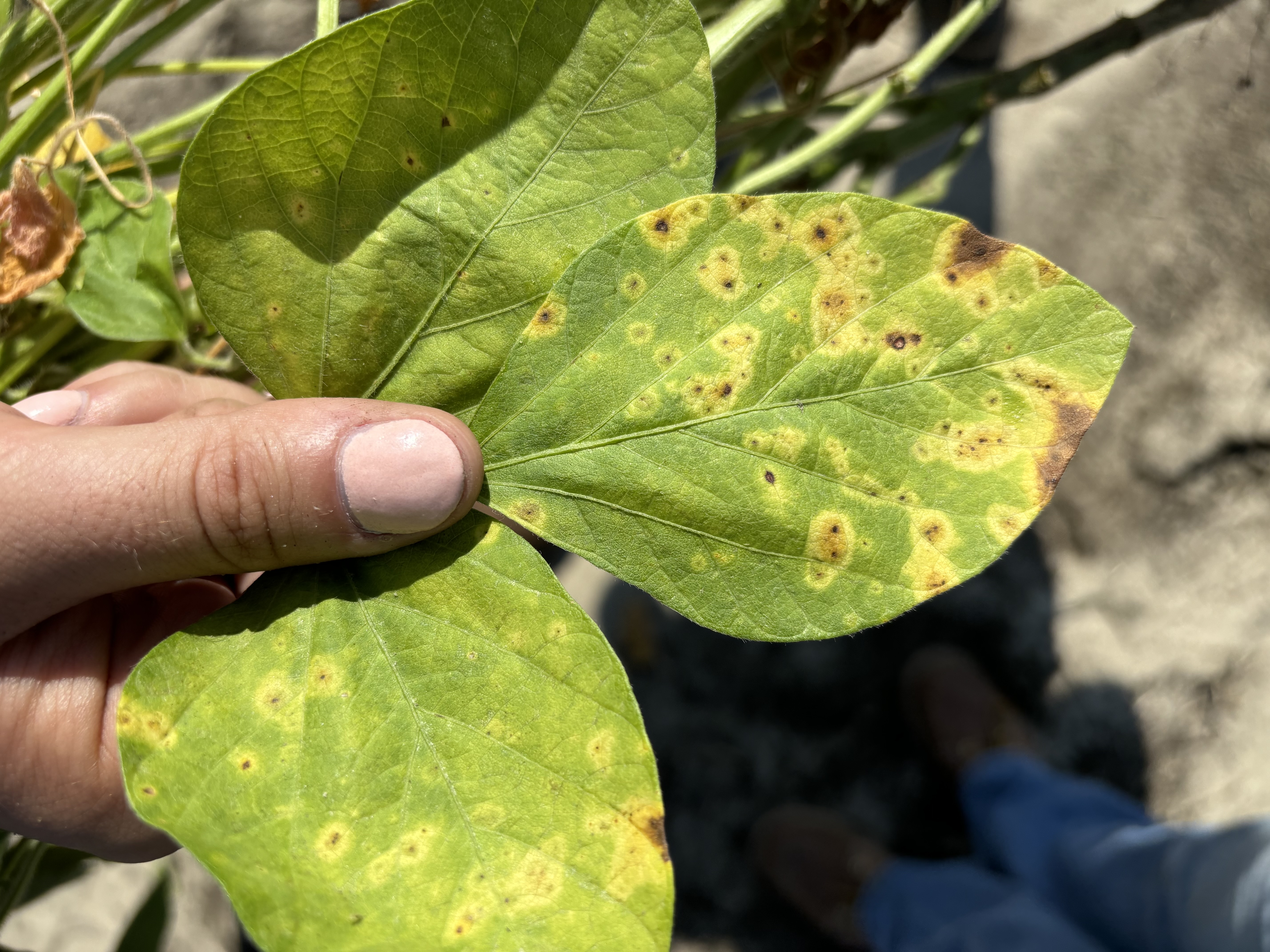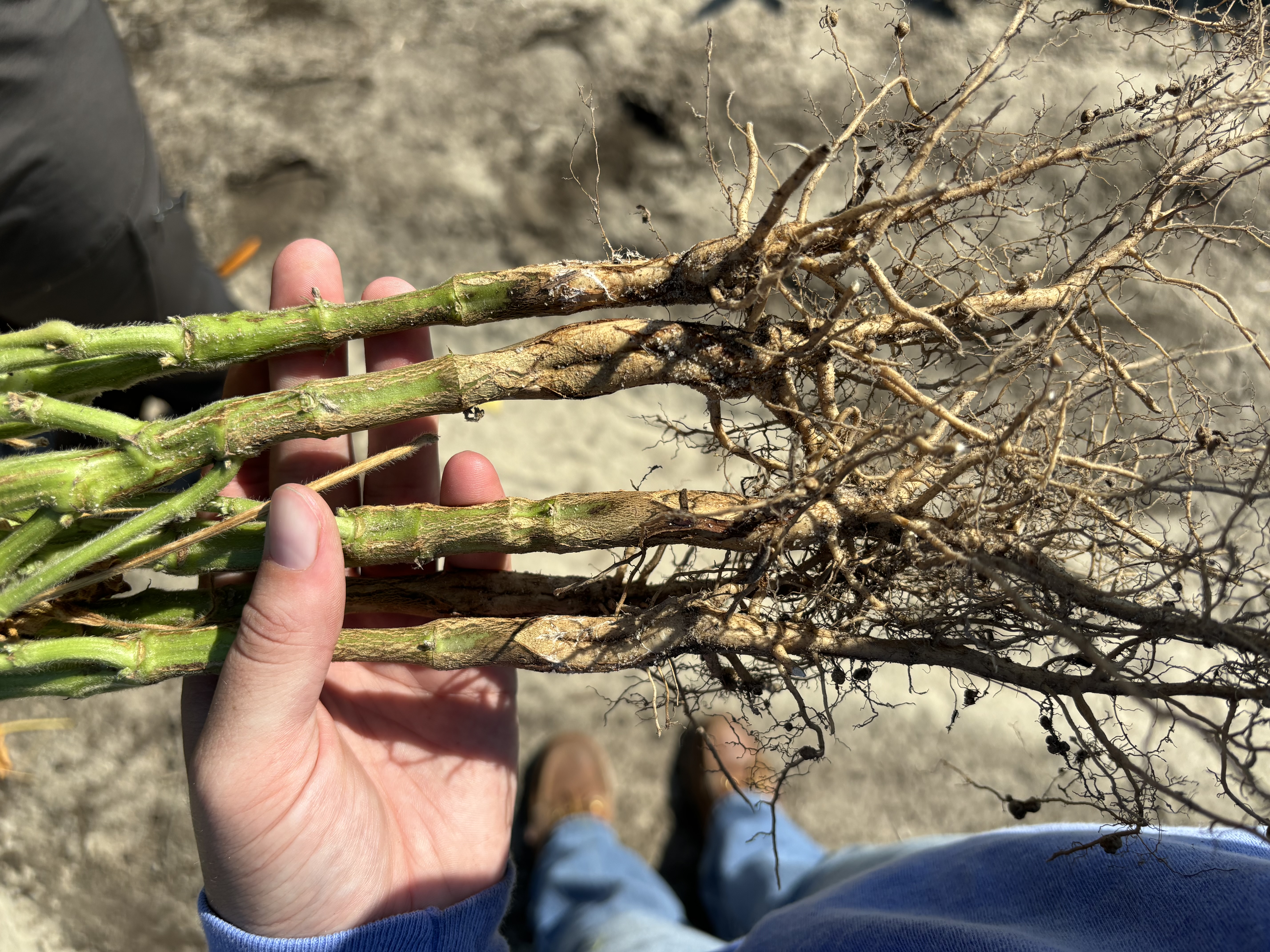Details:
Soybeans at the R3 (beginning pod) growth stage were found to have yellow and brown discoloration of leaves, wilting, and white matted growth along the stem. This was observed in patches across the field with roughly 25% of the site being affected. This issue was confirmed by an NC State Extension Specialist to be Southern Blight. Southern Blight or Southern Stem Rot is caused by the fungus Sclerotium rolfsii. Symptomology associated with southern blight includes yellowing, wilting, light brown lesions on stems near the soil surface (caused by overwintering), and white fan-like mat of hyphae on infected stems. This pathogen favors hot, wet weather conditions. This environment's weather conditions (very hot and receiving adequate rainfall) could have synergized symptomology.
Conclusion:
Using non-host crops (such as corn, wheat, grain sorghum) in a crop rotation may help decrease pathogen levels. Deep tillage that buries the sclerotia may also help, but this isn't available for all operations. Unfortunately, fungicide use is not recommended, but yield loss is rarely significant in North Carolina.
Resources:
Southern Blight | NC State Extension
Disease Management | NC State Extension



